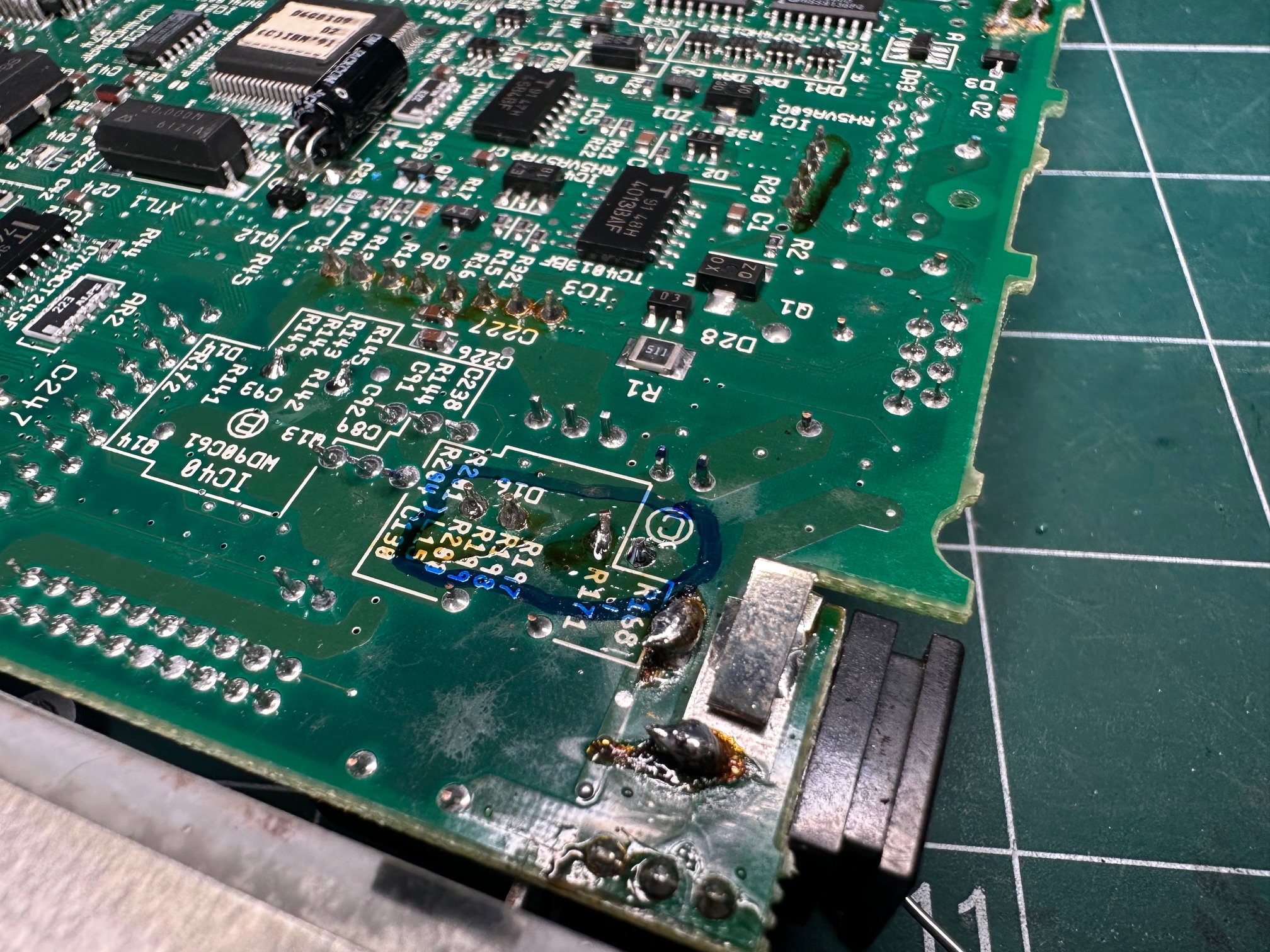N33 comes from the 8533 model type.
Note: this article is about the 16Mhz 386 model which was a direct relation to the Japan-only second-generation PS/55 Note - the N23 SX, minus the built-in floppy drive. It also had a Western keyboard and built-in external video display. The 12Mhz model without external video is completely different inside, made up of two main boards of equal size, whereas the 16Mhz model is one large board. The single planar motherboard is codenamed EXCEL-MAIN
The N33 machines are successors to the original note and N23 SX Japanese machines and is a precursor to the N51 and C23V Notes - which eventually became the C52 Thinkpad 700C.
The reference disk maker for the 16Mhz version can be found here.
Here is a picture with the 16Mhz version on the left and the 12Mhz version on the right. Note that the top-right quarter of the 16Mhz model is a big empty space where the floppy ribbon connector is fed to the small board on the top-right of the machine with two chips on which has the connector for the external floppy - on the N23 SX, this big empty space is taken up by the internal floppy.
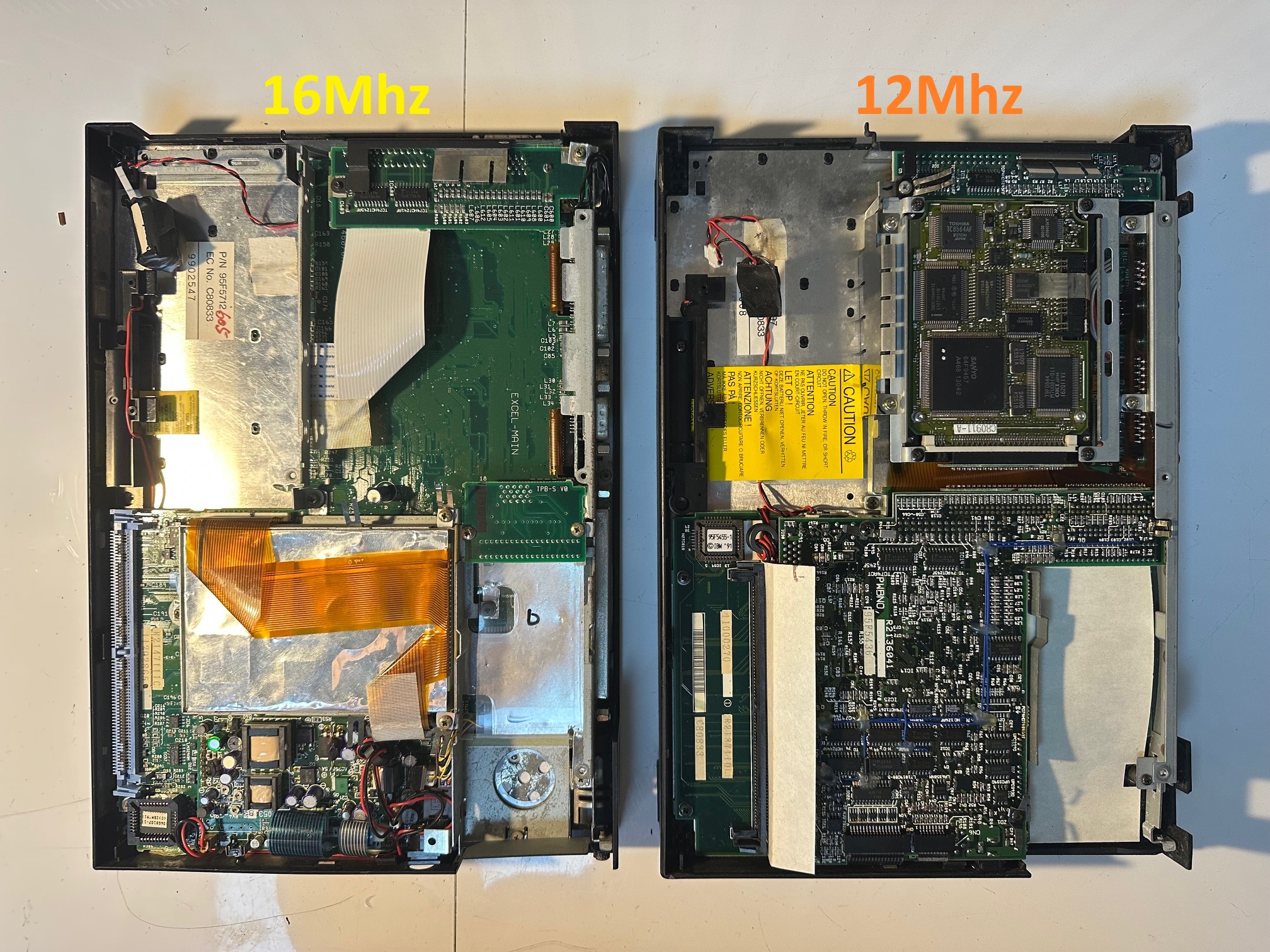
The 16Mhz model also has a display invert switch, whereas the 12Mhz one does not. Here is a picture of the 16Mhz bezel:
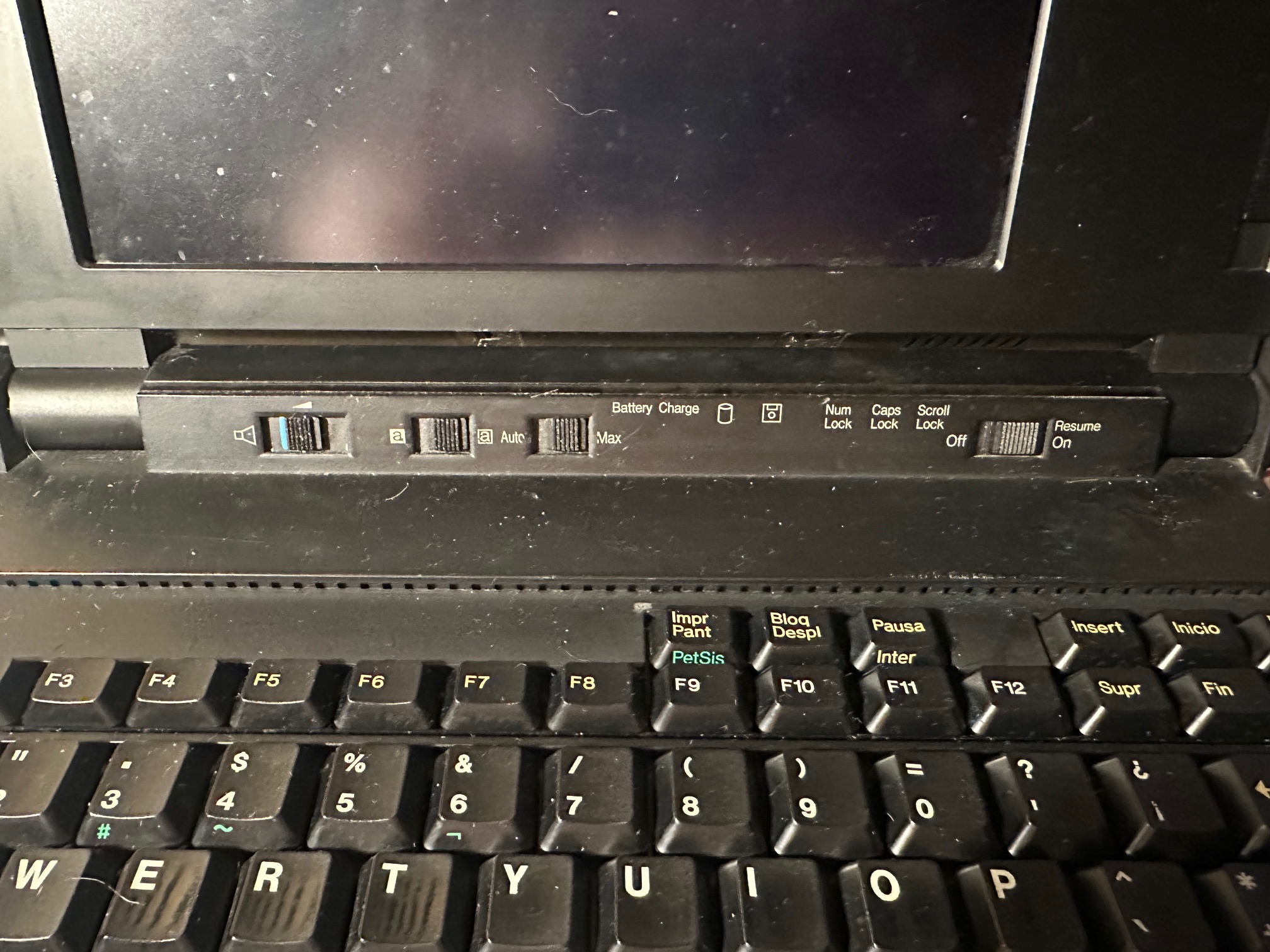
Here are pictures of the top and bottom of the mainboard:
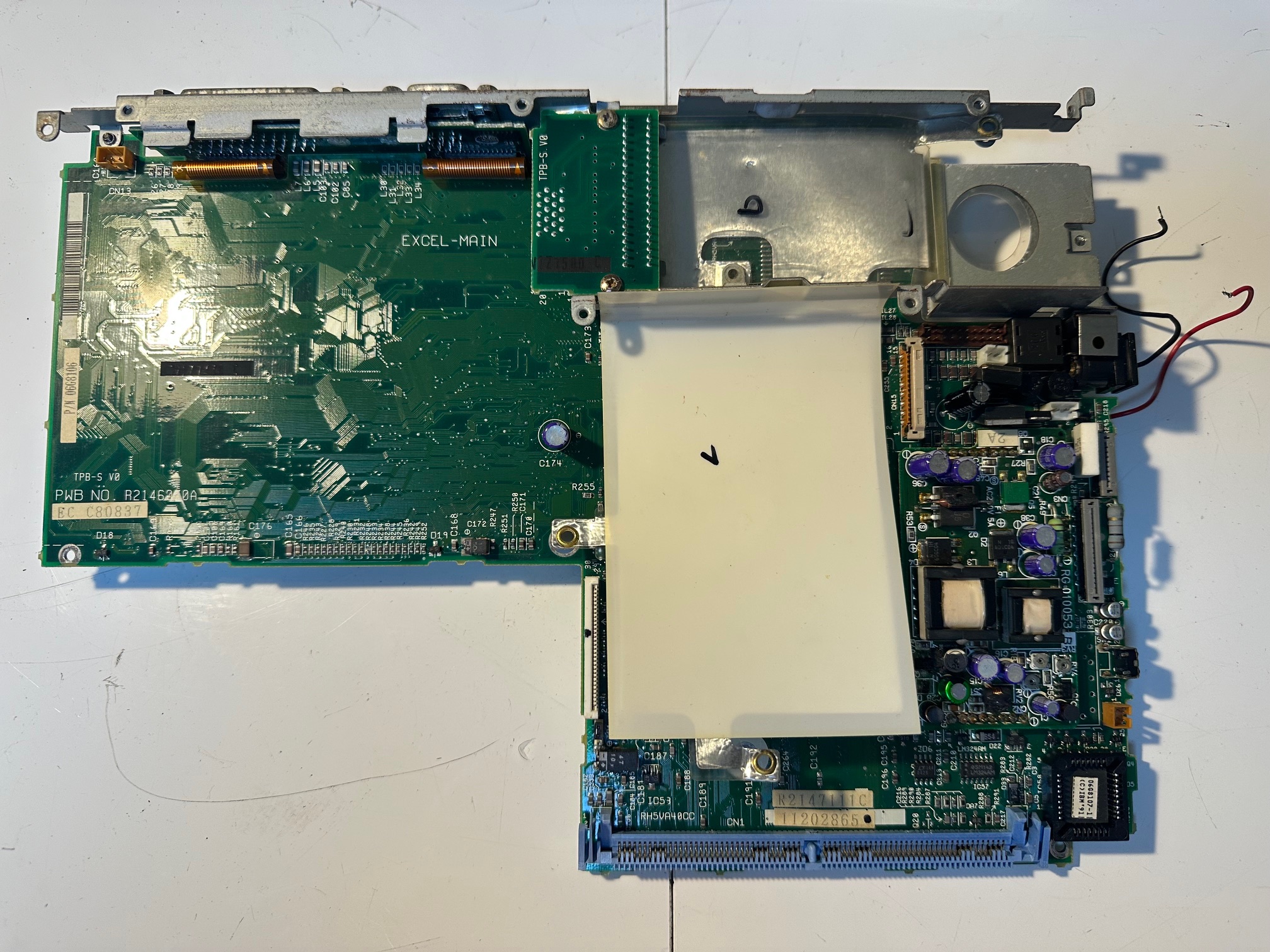
And the bottom:

The 16Mhz model has a similar DC/DC daughterboard, soldered onto the main board:. Here is it alone, after recapping:
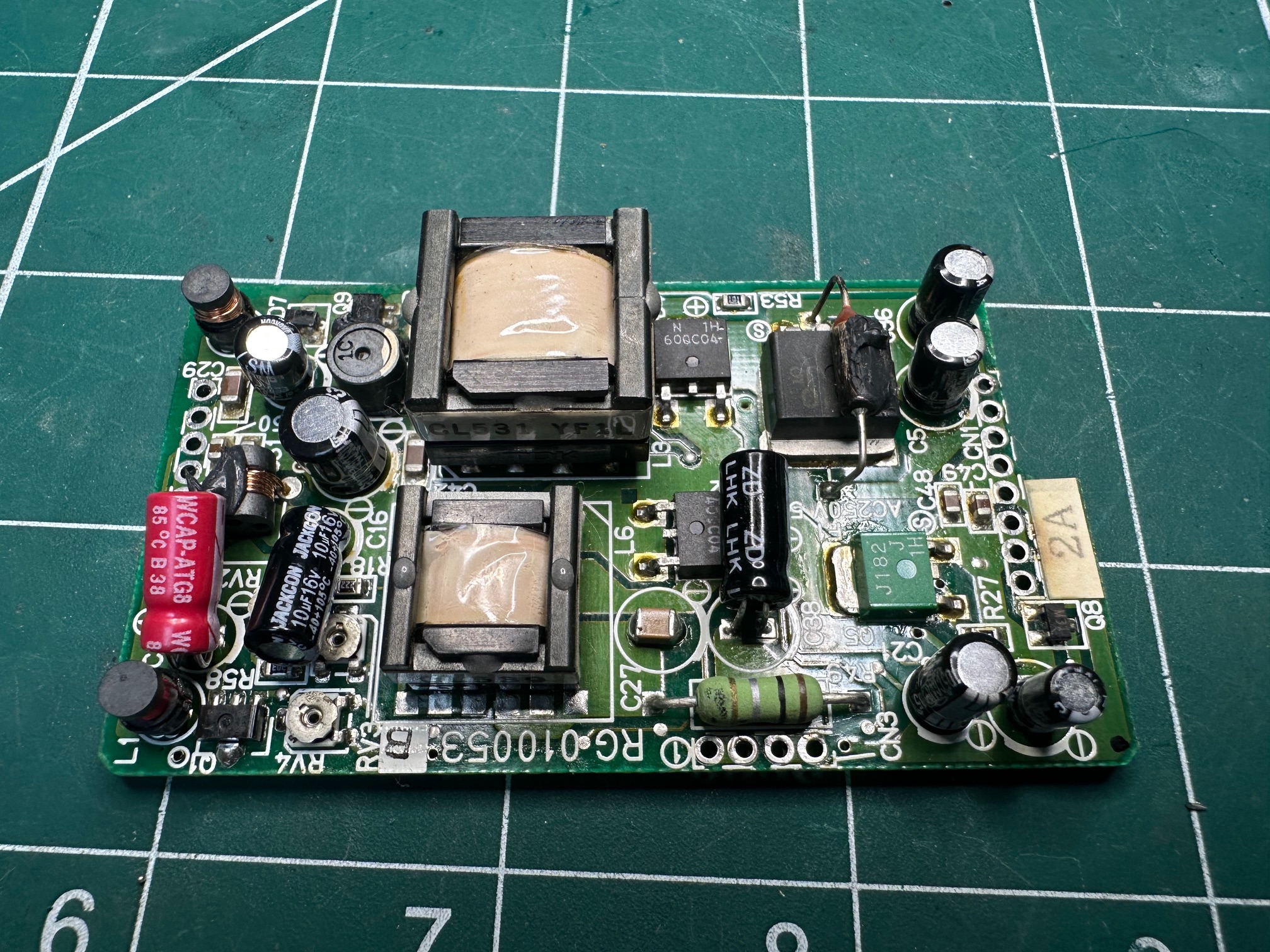
Here is a picture of the two small cylinder fuses on the mainboard - one is for the mains supply and one is for the battery. Often one or both will have blown and need replacing. These are the two little shiny cylinders in the middle of the photo. The 12Mhz version only has one cylinder fuse and a seperate through-hole fuse.
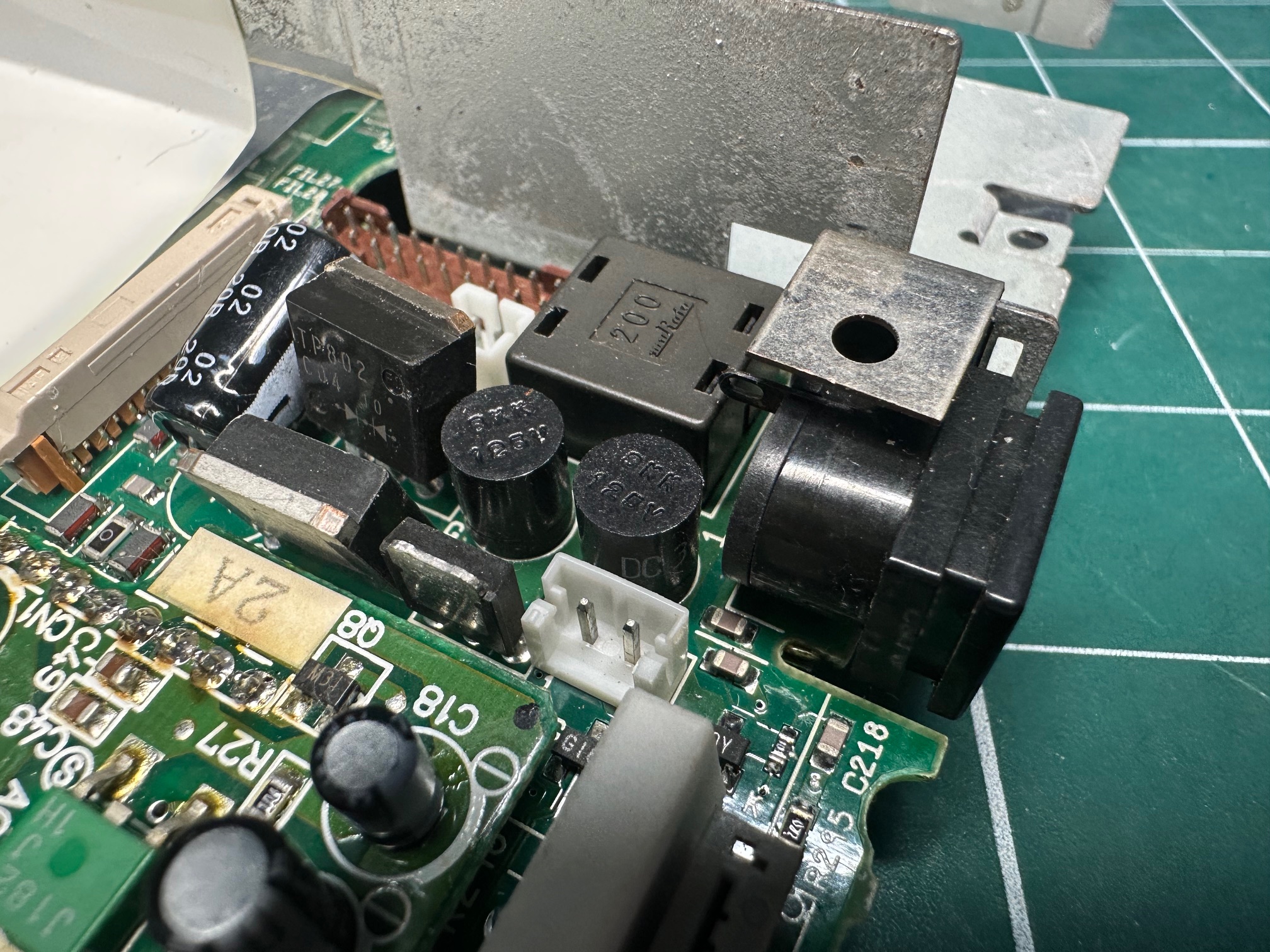
If you need to check the fuses from the rear side of the board, you can continuity test these pins:
